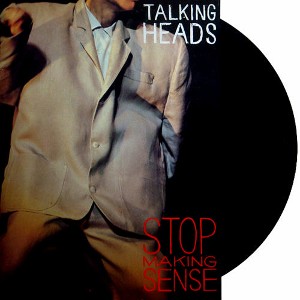Reversibility Part Two
In a previous post I introduced the concept of reversibility and discussed how it is a critical component of sports performance. The basic idea is that the ability to change directions smoothly at all times implies a balance and readiness to move without hesitation that is a huge advantage to an athlete on the field of play.
But reversibility is not just for sports. According to Moshe Feldenkrais, reversibility is a quality that helps define movement excellence in everyday life as well. Or as Eric Cobb sees it, life is a sport, so everyone is an athlete. I agree. One of the themes of this blog is that movement that works on the sports field is usually movement that is healthy and comfortable for everyday life.
Unlike sports however, reversibility in everyday activity has little value in and of itself. Life usually does not require that you change directions incredibly quickly. Maybe if you fail to do so you will miss out on the last doughnut at a meeting or something. Or sit on a whoopie cushion. But these are not sufficient incentives to strive for reversibility in common movements.
The reason we look for reversibility in everyday life is that it tells us something about the efficiency, health and comfort of our movement. For most everyday activities, the lack of reversibility in a movement implies that it was done in a manner that is more likely to place unnecessary stress on the body.
Squatting to sit is an example of a common act that that is optimally performed in a reversible way. Most people will squat down with control for part of the distance and then at some point just drop their weight into the chair so that they land with a plop. Of course, as soon as the weight is falling as opposed to being lowered, the movement is no longer reversible.
While this is not the end of the world because the chair is soft, it does start to ingrain a movement pattern that only works in a world where your uncontrolled movements will always be cushioned by soft objects. When you use a similar squatting pattern without a soft cushion to decelerate your butt (e.g. almost any time you bend your knees) then your body weight will basically just fall into the bottom position, where you must catch it more suddenly than if you lowered it down with control.
It is always easier to receive a weight that is handed to you gently rather than thrown or dropped on you. It is easier for your knees as well. If you drop your weight into the bottom position of a squat, there is more deceleration work to be done in the end range, and less time to get the joints placed in the optimal position to receive and control the weight. So, to improve your form in squatting to sit, you can simply ensure that you are able to reverse the movement smoothly at any point during the trajectory. This will ensure that you are not just letting yourself fall and then catching yourself at the bottom.
You could think of any movement in similar terms. Any time you move a limb or body part from one place to another, you could do so in a more ballistic or more reversible fashion. With the ballistic method, you essentially throw the limb or drop it to get it moving, and then just let it fly to its destination and catch it at the end. This will give your movement the jerky, floppy look of Talking Heads’ lead singer David Byrne in the Once in a Lifetime video. By contrast, to move reversibly you would deploy the force needed to complete the movement bit by bit, giving the movement an even smooth appearance, like a ballet dancer or Peter Crouch doing the robot.
You can see similar stylistic distinctions in peoples’ walks - some people tend to kick their feet out as they walk, or let them crash into the ground. Their walk seems to alternately stall and then lurch forward. Others seem to glide over the ground like a rolling ball. There are definitely some times you need a more explosive or ballistic style of movement for speed, or power, or African dancing, but for everyday movements the smoother style is likely to be less stressful.
So how can you move with more reversibility? First, understand that not all movement is going to be reversible - jumping, sprinting and barbell snatches are inherently ballistic activities. But it is possible to perform most exercise movements in a smooth reversible fashion - push ups, pull ups, squats, presses, rows, etc. Moving at a constant reversible speed might cause you to find some sticking points along the way that will tempt you to jump over them with ballistic momentum, but if you stay slow you might be safer and also improve your strength and control at the weak point in the range of motion.
A surprising number of fundamental human transitional movements like rolling from back to side to front to sitting to kneeling to crawling to squatting to lunging to standing are all very reversible. A well organized body can get from one place to the next while constantly maintaining the delicate balance of a teeter totter at all points, so that only the smallest push is needed to move in either direction. Of course that is how we all learn to move in the first place - babies are not capable of providing any more than a gentle push to propel any of their movements, so you know they are always using the reversible and not the ballistic method to move. The Feldenkrais Method builds many lessons around exactly these types of baby and fundamental human movements.


